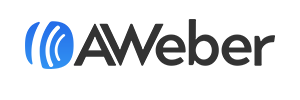Web Push Notifications are clickable messages that appear on your website visitors' devices, even when they're not actively browsing your site. Unlike email, which requires collecting addresses and waiting for subscribers to check their inbox, web push notifications deliver instant updates directly to subscribers' browsers or devices, creating an immediate communication channel with your audience.
What Are Web Push Notifications?
Web Push Notifications are browser-based messages that appear as alerts on computers and mobile devices. When visitors opt in to receive notifications from your website, they're granting permission for your site to send them timely updates, announcements, and content - regardless of whether they're currently on your site or even have their browser open.
These notifications appear outside the browser window, typically in the corner of the screen or in the device's notification center, making them highly visible and difficult to miss. Each notification can include a title, message text, image, and clickable link that takes subscribers directly to your chosen destination.
Key Benefits:
Web push works without email addresses, making it easy for visitors to subscribe with a single click. Notifications are delivered instantly, enabling real-time communication. They generate high engagement rates because they appear directly on subscribers' devices. And unlike email, web push doesn't compete with crowded inboxes or spam filters.
How Web Push Notifications Work
The Subscription Process begins when a visitor to your website encounters your opt-in prompt - a browser permission request asking if they'd like to receive notifications from your site. If they accept, their browser stores a unique subscription identifier, allowing you to send notifications to that specific browser and device combination.
Sending Notifications works through AWeber's web push interface, where you compose your message, choose timing, and send to your subscribers. The notification is delivered through the browser's native notification system, appearing wherever the subscriber has configured their browser notifications to display.
Subscriber Management happens within AWeber, where web push subscribers appear alongside your email subscribers. You can segment web push subscribers, track engagement, and manage permissions all from your AWeber account.
Common Use Cases for Web Push Notifications
Breaking News and Updates: Deliver time-sensitive information instantly, whether it's breaking news, flash sales, or urgent announcements that require immediate attention.
Content Publication Alerts: Notify subscribers immediately when you publish new blog posts, videos, podcasts, or other content they've expressed interest in receiving.
Abandoned Cart Recovery: Remind visitors who left items in their shopping cart to complete their purchase, recovering potentially lost sales.
Event Reminders: Send timely reminders about upcoming webinars, live streams, product launches, or other scheduled events.
Price Drop Alerts: Notify subscribers when products they're interested in go on sale or when prices drop to their target range.
Re-engagement Campaigns: Bring visitors back to your site with compelling offers or content updates, even if they haven't visited in weeks or months.
Welcome Messages: Greet new subscribers immediately after they opt in, setting expectations and building the relationship from the first interaction.
Web Push vs. Email Marketing
While web push notifications and email marketing both enable direct communication with your audience, they serve different purposes and excel in different situations.
Speed and Immediacy: Web push notifications are delivered instantly and appear immediately on devices, making them ideal for time-sensitive communications. Email requires subscribers to check their inbox and may sit unread for hours or days.
Opt-In Friction: Web push requires just one click to subscribe - no forms, no email address collection. Email requires visitors to provide personal information and often verify their address through confirmed opt-in.
Message Length and Format: Web push notifications are brief by design - typically a title, short message, and optional image. Email allows for longer-form content, detailed formatting, and complex layouts.
Engagement Timeline: Web push notifications have a short lifespan - if subscribers don't engage within hours, they likely won't. Email persists in inboxes and can be discovered days or weeks later.
Best Practice: Use both channels together. Web push excels at immediate, time-sensitive communications, while email builds deeper relationships through detailed content and persistent messaging.
Technical Requirements
HTTPS Required: Web push notifications require your website to be served over HTTPS (secure connection). HTTP sites can still use web push through AWeber's workaround solution, but HTTPS provides the best experience.
Browser Compatibility: Modern versions of Chrome, Firefox, Safari, Edge, and Opera support web push notifications. Mobile browsers on Android and iOS also support the feature, though implementation varies by platform.
Website Integration: You'll need to add AWeber's web push code to your website, either through the AWeber for WordPress plugin or by manually adding code to your site's header.
Key Web Push Terms
-
Web Push Notification: A clickable message that appears on a user's device through their web browser.
-
Opt-In Prompt: The browser permission request asking visitors if they want to receive notifications from your site.
-
HTTPS: Secure protocol required for web push notifications on most browsers.
-
Browser Permission: The consent granted by a visitor allowing your site to send push notifications to their browser.
-
Service Worker: Background script that enables browsers to receive push notifications even when your site isn't open.
-
Welcome Notification: An automated message sent immediately when someone subscribes to your web push notifications.
-
Quiet Permission UI: Browser feature that minimizes intrusive permission prompts by moving them to less prominent locations.
Learn More About Web Push Notifications
Explore detailed setup instructions, best practices, and troubleshooting:
